BLOG
Top 3 Benefits of Using Drones for Building InspectionsBuilding and roof inspections are an essential part of maintaining the integrity and safety of structures. Traditionally, these inspections have been time-consuming and costly, requiring manual labor and extensive physical access.
However, with the advancements in technology, specifically the utilization of drones, the field of roof consulting and building envelope inspections has been revolutionized. Drones offer a game-changing set of benefits that not only enhance the efficiency and accuracy of inspections but also provide significant cost-savings. In this article, we will explore the top three game-changing benefits of utilizing drones for building and roof inspections, and how they are transforming the industry.
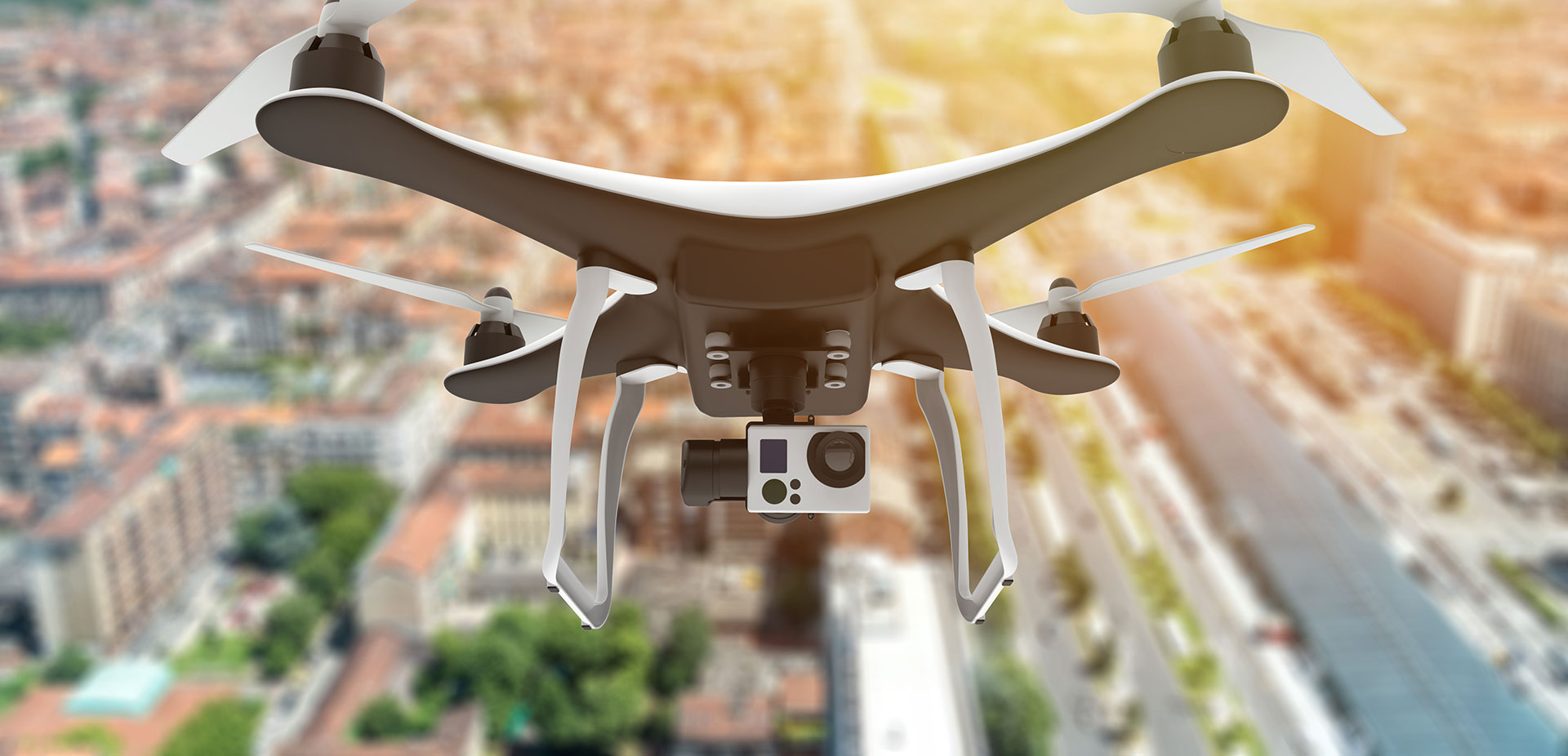
How can drones benefit you as a building owner or property manager?
Professional roof and building consultants have embraced the utilization drones to offer an extensive range of services and advantages to their clients. With the continuous development and widespread deployment of drones, the potential for groundbreaking services in this field continues to expand exponentially.
Building envelope consultants have recognized the immense value that drones bring to their industry, allowing us to efficiently assess and inspect roofs and buildings with exceptional accuracy. By utilizing drones, we have gained the ability to reach otherwise inaccessible areas, ensuring a comprehensive examination of structures and facilitating the identification of any potential issues or areas in need of repair or maintenance.
In addition to enhanced safety and efficiency, utilizing drones for building and roof inspections also brings about significant cost savings and increased accuracy. Traditional manual inspections can be time-consuming and labor-intensive, resulting in higher costs for labor and resources. With drones, inspections can be conducted more quickly and efficiently, reducing overall inspection time and lowering labor costs.
Moreover, drones are equipped with advanced imaging technology that allows for highly accurate and detailed inspections. The high-resolution cameras capture images and videos with precision, providing clear and detailed visuals of the building or roof. This level of accuracy enables inspectors to identify potential issues or damage that may be missed during manual inspections, ensuring a more comprehensive assessment of the structure.
By utilizing drones, businesses can streamline their inspection processes, reduce costs, and improve the accuracy of their building and roof assessments. It is a game-changing technology that offers numerous benefits to the construction and roofing industries.
There are several significant benefits of using drones for building inspections, but here are the top 3 reasons you should consider utilizing this technology for your building assets.
#1 – Access Hard to Reach Areas
The biggest game-changing benefit of utilizing drones for building and roof inspections is their ability to access hard-to-reach areas. Traditional methods often require inspectors to physically access difficult or dangerous areas, such as rooftops, high-rise buildings, or areas with limited accessibility. This not only increases the risk of accidents and injuries but also adds additional time and resources to the inspection process.
Drones, on the other hand, can easily reach and navigate these challenging areas, providing a safe and efficient solution. Equipped with advanced flight capabilities and maneuverability, drones can access tight spaces, rooftops, and other inaccessible areas with ease. This eliminates the need for inspectors to put themselves at risk, enabling inspections to be completed faster and more effectively.
Whether it is inspecting the condition of a chimney, checking for roof damage in difficult-to-reach corners, or assessing the integrity of high-rise building exteriors, drones offer a cost-effective and reliable method to access and inspect hard-to-reach areas. This not only improves the overall safety of the inspection process but also ensures a more thorough assessment of the building or roof.
A good example of a challenging area to access is the evaluation of mid-rise facade waterproofing. We have encountered numerous buildings where concerns arose regarding the facade. Typically, assessing vertical surfaces like these would involve the arduous tasks of erecting scaffolding or renting aerial work platforms. However, the employment of drones enables swift access to these areas, solving the need for scaffolding. As a result, assessments can be performed more expediently and affordably.
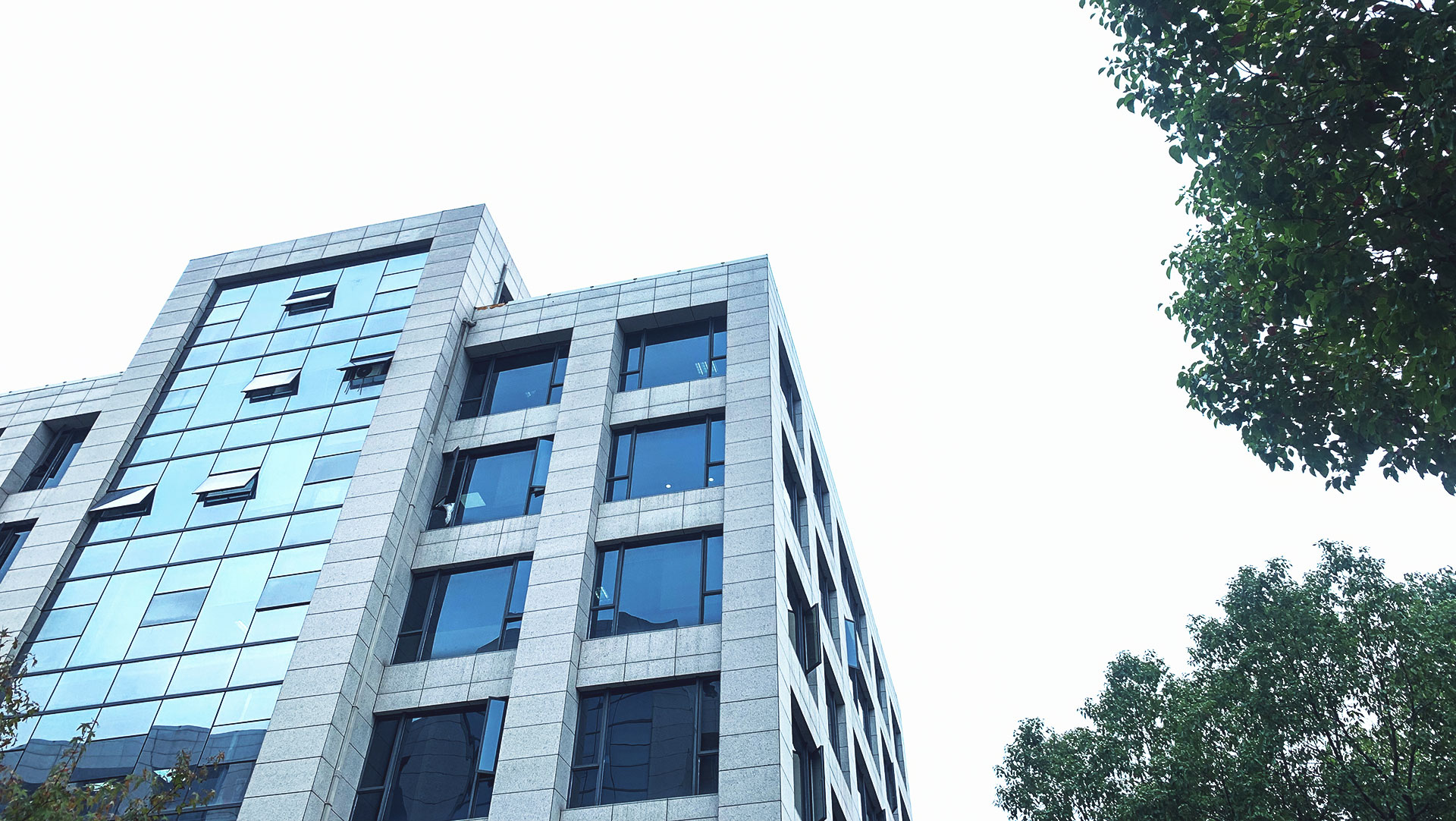
The utilization of drones for building inspections offers a plethora of benefits. Not only does it simplify access to difficult-to-reach areas, but it also reduces the associated costs. Moreover, drones serve as a safeguard, ensuring the safety of individuals during the inspection process. Additionally, their versatility allows for more efficient evaluations of external points connected to the power grid, enabling prompt identification of potential waterproofing concerns. Ultimately, the incorporation of drones in building inspections revolutionizes the industry, making it safer, more cost-effective, and expeditious.
#2 – Cost Effective Aerial Imagery
There are numerous reasons why building owners and managers greatly value having access to aerial images of their properties. One of the primary uses of these images is for documenting the present condition of the buildings, which is crucial for insurance coverage purposes. By having high-quality aerial images, building owners can provide concrete evidence of the building’s condition, which helps in the event of any insurance claims.
Furthermore, aerial images are widely used for planning and developing properties. These images provide valuable insights into the property’s current layout, giving owners and managers the ability to effectively strategize and make informed decisions about future projects. By examining the aerial images, they can identify potential areas for expansion, locate property boundaries, and develop effective blueprints for improvements or modifications.
In addition to planning and insurance purposes, aerial images also offer building owners and managers the advantage of gaining a better oversight of their properties. With a bird’s eye view provided by the drone technology, they can have a comprehensive understanding of the property’s entire layout, enabling them to identify any shortcomings, maintenance issues, or potential risks that may have been overlooked at ground level. This enhanced perspective allows them to take proactive measures to maintain and improve the property’s overall condition.
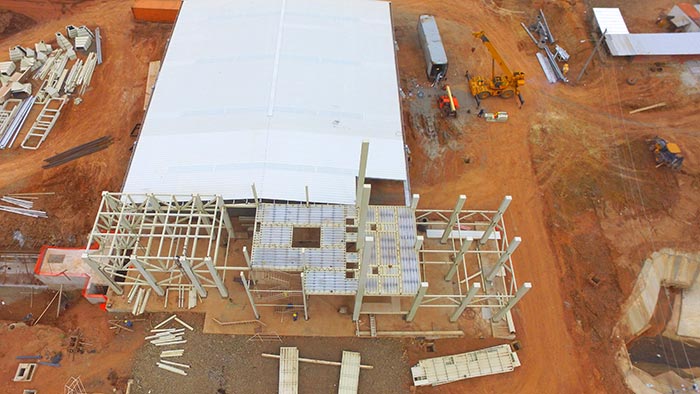
When it comes specifically to roof inspections, the drainage system plays a vital role in the long-term performance of the roofing system. Roof systems with efficient drainage tend to perform better and have an extended lifespan. Aerial imagery becomes indispensable in assessing the overall drainage patterns of the building. By examining the images, owners and managers can identify any areas prone to ponding water, which can lead to roof leaks or other structural damages if not addressed promptly.
While aerial imagery services may offer valuable insights, they often come with significant costs and scheduling limitations. The availability of aerial image companies may result in long waiting periods, forcing building owners and property managers to delay their assessments or projects for months. Moreover, these companies typically do not possess the expertise to interpret the images and provide detailed analysis on drainage patterns or other roof system features.
Therefore, a more efficient and cost-effective solution lies in the deployment of drones by professional roof consultants. These consultants can utilize drone technology to quickly and accurately capture aerial images of the building, without the need to rely on external aerial image companies. This approach significantly reduces waiting times and allows owners and managers to promptly assess the current condition of their properties.
Furthermore, professional roof consultants possess the necessary expertise to interpret the aerial images and identify important details such as drainage patterns and potential problem areas. By utilizing drone technology, building owners and property managers can swiftly determine the current state of their roof systems, enabling them to make timely and informed decisions about necessary repairs or maintenance.
#3 – Aerial Infrared
Many building owners and property managers have found infrared scanning services to be valuable in assessing the condition of their roofing systems. Infrared technology is utilized to detect trapped moisture within the roof assemblies. Infrared cameras have the ability to analyze the infrared energy emitted from the roof systems and capture detailed images of the energy patterns. These images can then be carefully studied and interpreted to identify potential areas where moisture has become trapped.
Traditionally, there have been two main methods for capturing infrared images. The primary approach involves sending technicians equipped with handheld infrared cameras to physically assess the roofs. These technicians would need to climb on the roofs to capture the images. Another option has been to hire aerial infrared thermography companies. These companies use manned planes mounted with external infrared cameras to conduct flyovers and capture the necessary images. However, this method can be quite expensive and time-consuming.
Fortunately, the introduction of unmanned aerial vehicles (UAVs) or drones equipped with infrared cameras has revolutionized the field of building inspections. Drones offer distinct advantages over the traditional methods. Firstly, using a drone with an infrared camera can be a much more cost-effective solution. Unlike a manned plane, a drone can be deployed locally at the site, eliminating the need to fly from a remote airport. This significantly reduces the overall cost.
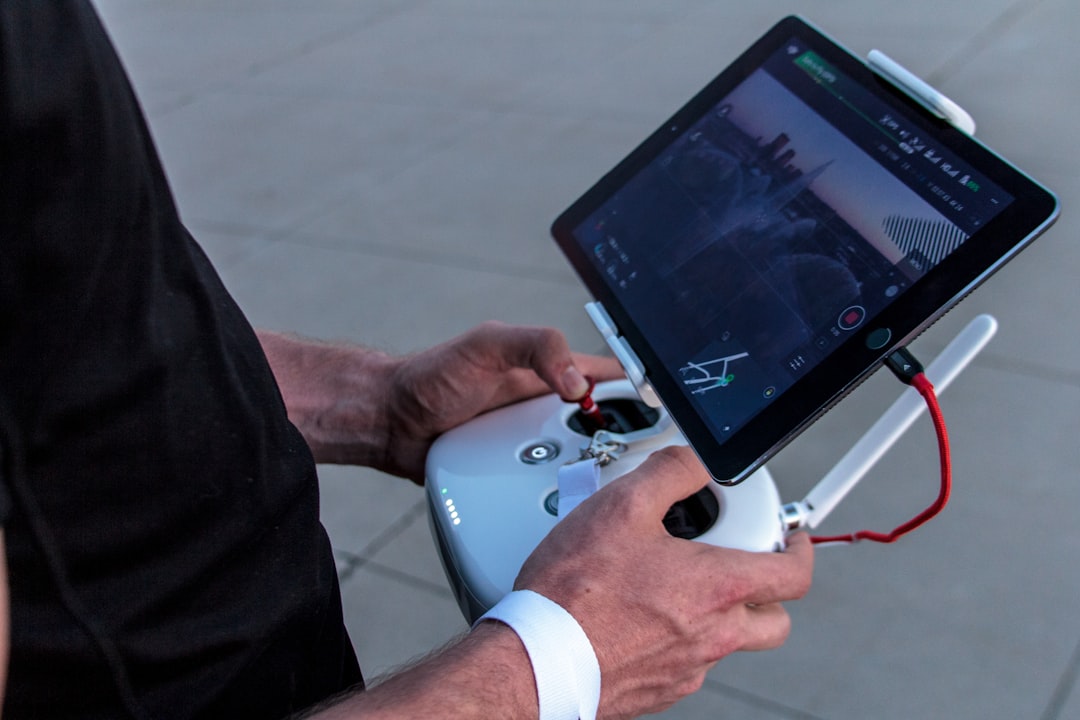
Moreover, drones can hover directly over the designated target, allowing for more comprehensive image capture compared to a flyover conducted by a manned plane. This means that the drone can obtain a higher number of images with better accuracy and detail. This increased amount of data allows for more thorough analysis and interpretation.
In summary, the utilization of infrared scanning services combined with the use of drones fitted with infrared cameras offers significant benefits for building owners and property managers. This technology allows for more efficient and cost-effective roof assessments, as well as the potential for more accurate identification of areas with trapped moisture. By embracing these advancements in building inspection techniques, property owners can ensure the longevity and safety of their roofing systems.
Are there any downsides to drone building and roof inspections?
Like any other technology, drones have their limitations and are not a one-size-fits-all solution for every situation. While they have numerous advantages, a professional roof consultant is still indispensable when it comes to thoroughly assessing a building’s roof system. There is no substitute for a hands-on inspection, where the consultant can physically step on the roof and closely examine its condition.
However, drones are incredibly valuable tools that complement the work of a professional roof consultant. Consider them as extensions of the consultants themselves, enhancing their abilities and enabling them to provide top-quality services to their clients. With the incorporation of unmanned aerial vehicles (UAVs) into their work, consultants can unlock several key benefits in the field of building inspections.
To determine if your building or structure is suitable for drone-assisted inspections, engage the expertise of a professional roof consultant such as RAM Infrared Services. Together, we can assess the unique requirements of your property and determine if incorporating drone technology would provide significant advantages in terms of safety, efficiency, and cost savings. Don’t miss out on the opportunity to leverage this cutting-edge tool to ensure the quality and longevity of your building’s roof system. Contact RAM Infrared Services today to schedule your inspection.
Related posts
The Impact of Water Infiltration on Your Commercial Property: A Comprehensive Analysis
A Comprehensive AnalysisWater damage is the leading cause of property insurance claims for commercial buildings, costing an estimated $2.5 billion annually. As a commercial property owner or manager, the structural integrity of your building is crucial to the success...
Exploring Technology Trends in Commercial Property Management
The latest advancements in technology shaping the landscape of commercial property managementSmart Building Solutions Smart building solutions are revolutionizing the way commercial properties are managed. These solutions utilize advanced technologies such as Internet...
The Financial Impact of Neglecting Roof Maintenance: Why it Matters for Your Bottom Line
Why it Matters for Your Bottom LineMaintaining a commercial or industrial building involves regular upkeep and repairs, but one area that is often overlooked is the roof. Neglecting roof maintenance can have significant financial implications for businesses, impacting...

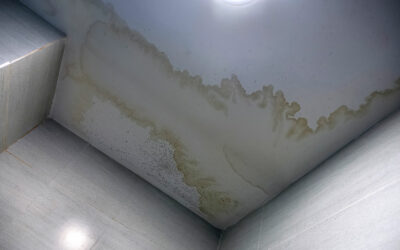


0 Comments